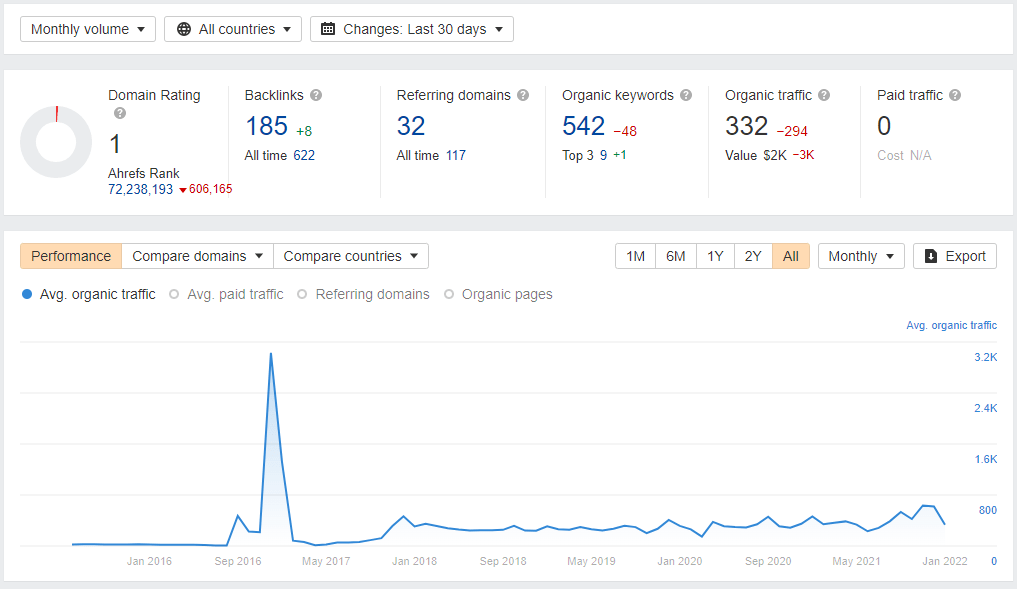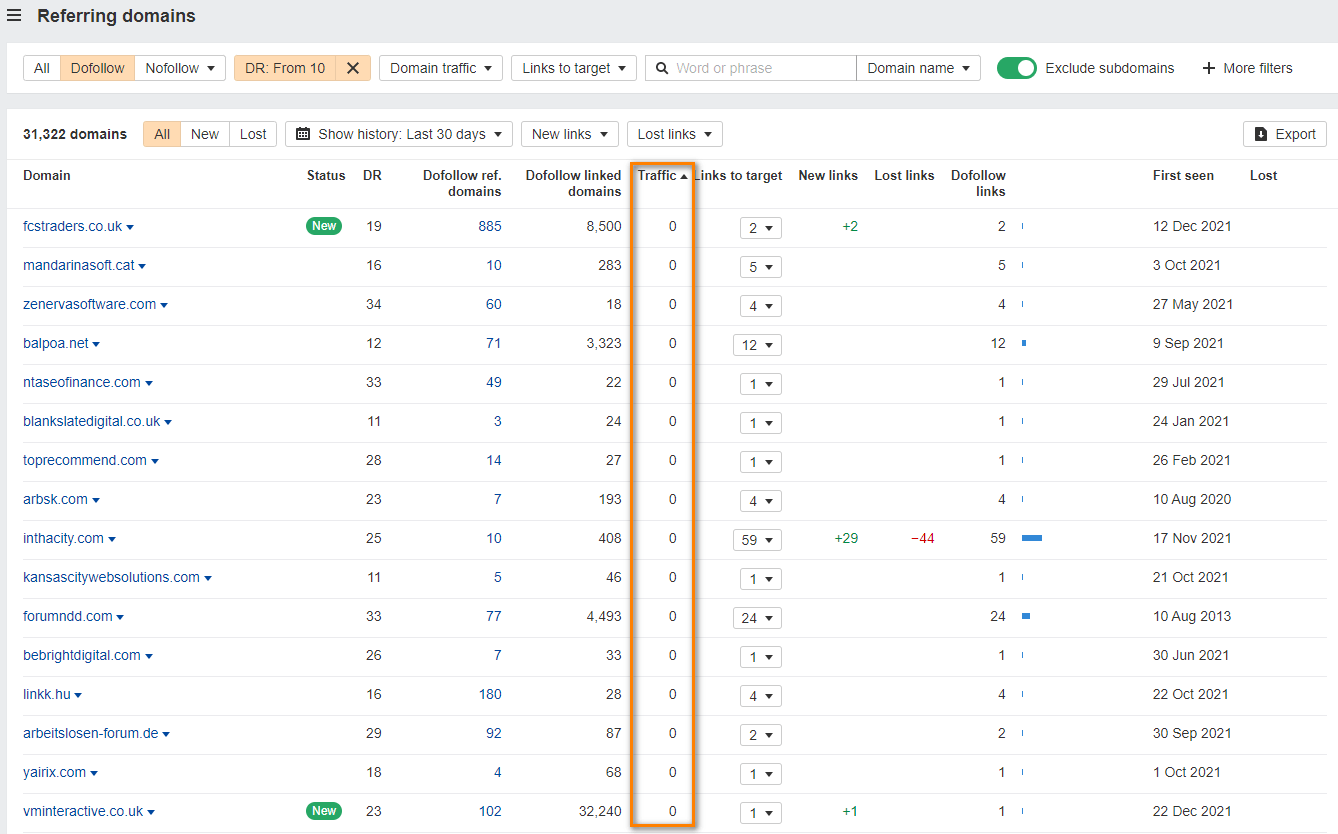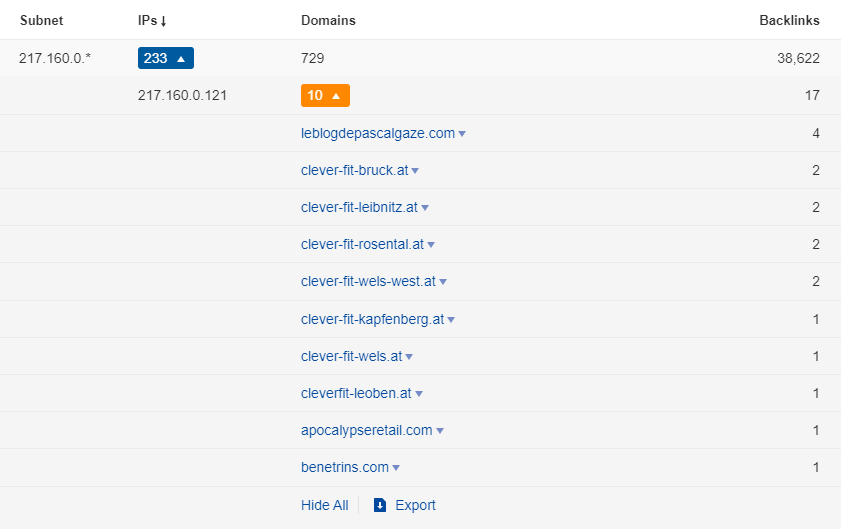Private Blog Network (PBN)
What is a PBN?
A private blog network (PBN) is a network of websites created solely to link out to another website and improve its organic search visibility. The idea is the “feeder” sites will pass link equity back to the main site, which will boost its authority and, thus, its ranking power.
Using PBNs is seen as an attempt to manipulate the algorithm. As such, Google classes this action as a link scheme that violates its webmaster guidelines. This makes it a black-hat SEO tactic.
How do PBNs work?
PBNs make it seem as though a website has “earned” links from other websites on merit. This is why backlinks are a Google ranking factor in the first place: Every link back to your site is a vote of confidence, showing Google that people like and trust your content.
By linking to your “money” site from the other websites in your PBN, you’re manufacturing those votes of confidence artificially in the hope that Google thinks they’re genuine and ranks you higher as a result.
Google does its best to fight unnatural links by constantly improving its algorithms. However, black-hat communities show a lot of evidence that PBNs still work for many websites.
That’s why the creators of PBNs go to great lengths to hide any so-called “footprints” that could tie the sites in their network back to their money site and clue Google in to what’s happening.
Why do people use PBNs?
Building PBNs effectively is risky, costly, and time consuming. Despite that, there are two main reasons people still use this link building tactic:
1. Link building is hard
In an ideal world, everyone would earn their backlinks organically using white-hat tactics like blogger outreach. But unfortunately, these tactics don’t always work out the way we want them to.
No matter how much effort you put into creating great, linkable content, you still have to rely on other website owners linking back to it. This means results are never guaranteed.
You could spend days setting up outreach campaigns and sending hundreds of emails but still fail to land new backlinks.
2. Anchor texts can be manipulated
Another reason people use PBNs is they can control the anchor texts of their backlinks. This matters because anchor texts help Google understand the context of the linked page. In turn, Google can then rank the right pages for the right keywords.
For example, imagine we’re trying to rank a website for the keyword “best protein powder.” Which of these backlink anchor text examples do you think will be most effective?
- Top protein powder deals
- Click here
- Unicorn toys
Obviously, the correct answer is the first one. It tells Google the topic of the linked page is protein powder. The second example doesn’t convey what the website is about, and the third is so irrelevant that the link is likely to be ignored by Google.
This is why many SEO professionals tend to want backlinks with keyword-rich anchor texts—they think these could help them rank higher on Google for their target search terms.
It’s usually impossible to control the anchor text of a link built through outreach, as it’s at the discretion of the site owner. But it is possible with PBNs.
What are the risks of using PBNs?
Using PBNs violates Google’s Webmaster Guidelines, which means doing so comes with some significant risks.
Here are a few.
PBN links can be ignored
Google tries to ignore links that it suspects are unnatural. If it realizes your links are PBN links, the algorithm will discount them completely. Consequently, they won’t impact your rankings—positively or negatively.
That may not sound particularly bad. But remember that building PBNs is time consuming and costly. If Google ignores them, all the time, money, and effort you put into them will be wasted.
PBN links can trigger a penalty
While Google usually ignores unnatural links, it’s not above taking things one step further. Sometimes, Google will mete out punishments to websites that it believes are deliberately manipulating rankings.
It can do this in two ways:
- By issuing a manual penalty
- By suddenly ignoring your PBN links
Manual penalties are issued by real human reviewers at Google. If you get one, you’ll receive a warning message in Google Search Console about “unnatural links to your site.”
As a result, your whole site or part of it will be demoted in Google—or possibly even deindexed entirely. The only way to reverse it will be to fix your backlink profile, submit a reconsideration request, and hope Google gives you a second chance.
Besides, Google’s algorithms are getting smarter. It’s likely that one day, you may suddenly lose the unfair advantage you get with PBNs.
Best practices surrounding PBNs
The overarching best practice for PBNs—and our recommendation—is not to use them at all. Doing so is extremely risky and, arguably, unethical. And it can also be costly.
Plus, if you don’t know what you’re doing—i.e., you’re not taking drastic measures to hide your “footprints” correctly so that Google doesn’t catch on—your rankings probably won’t improve anyway.
With that in mind, here are some other best practices that you should be aware of:
1. Do your due diligence
If you plan on working with a link building agency, make sure to vet it carefully. Some will try to sell you PBN links and pass them off as “real” links built through white-hat methods.
The best way to avoid falling for this is to ask the agency for samples of links it’s built for other clients upfront, then check them out for yourself.
You can usually tell if a site the link is placed on is a PBN. Such a site will get little or no organic traffic, have unnaturally placed links with exact-match anchor texts, and generally not look like the kind of site you’d ever visit or read as a user.
You can check a site’s estimated organic traffic in Ahrefs’ Site Explorer:

You should also apply due diligence when buying a website. Sellers should disclose the fact that they’re using a PBN in their site listing, but they don’t always do so.
Fortunately, you can check the website’s Referring domains report in Site Explorer. In it, you can sort the results by “organic traffic” in ascending order.

Very low organic traffic of the referring domain can indicate the website was only created to link out to other websites.
You can also check the referring IPs in Ahrefs’ Site Explorer and look for websites that share the same IP address or belong to the same subnet. Cheaper PBNs often use shared hosting.

Unfortunately, you won’t always be able to detect PBN links, as many PBN owners don’t allow Ahrefs to crawl their websites and index links on the sites.
2. Disavow PBN links
If you suspect some of the links pointing to your domain come from PBNs, you can tell Google to ignore them using the disavow tool.
However, you should only use this with extreme caution, as doing so incorrectly can harm your organic ranking positions. We don’t recommend disavowing suspected PBN links unless:
- You have received an “unnatural link” manual action in Google Search Console.
- You know you have PBN links and want to futureproof your site against penalties and future algorithm updates—even if it means sacrificing traffic in the short term.
This last point is crucial. Even if you know your site has PBN links, disavowing the links could still lead to a drop in traffic.
This is because Google may not yet realize they’re PBN links, so these links may be helping you to rank. Hence, make sure you’re aware of this before you disavow anything.
3. Do link outreach instead
Link outreach is a much safer alternative to building PBNs. It involves creating useful, linkable content; finding sites that may want to link to the content; and then pitching to the sites, requesting them to do so.
It’s hard work, but it’s pretty much the only way to build high-quality, white-hat backlinks to your site.
If you’re new to building links, check out the resources below:
FAQs
Are PBNs safe?
PBNs aren’t safe, as using them violates Google’s Webmaster Guidelines. This means that Google may penalize your site if it notices links from PBNs.
How do I know if I have links from PBNs?
You can use a backlink analysis tool like Ahrefs’ Site Explorer to view your backlink profile. Then, look out for unnatural links that:
- Are unnaturally placed.
- Have exact-match anchor texts.
- Come from low-quality websites that have little to no organic traffic.
If you see links with all three of these attributes, chances are they’re from a PBN.